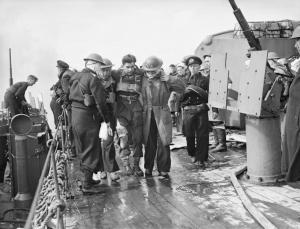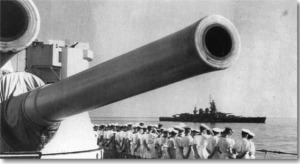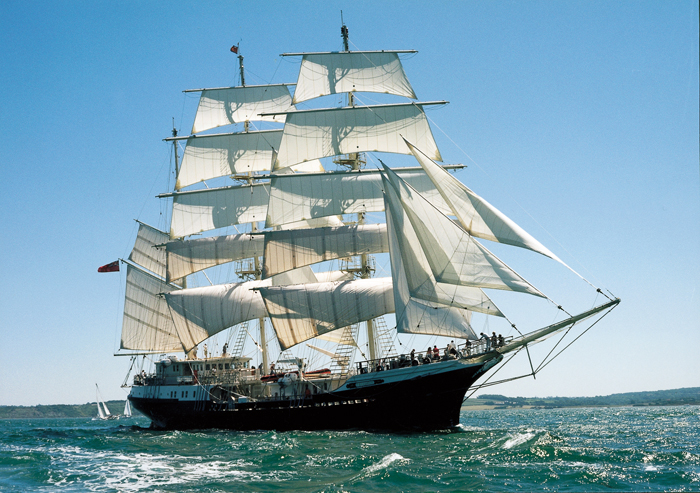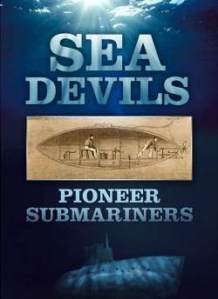Greece is a small, insular European nation of almost eleven million people with shipping being the oldest form of occupation of its inhabitants and a key element of Greek economic activity. What is worth noting is that in the immediate aftermath of the Greek sovereign debt crisis that began in 2008, Greek shipping has emerged once again as the healthiest and most dynamic sector of the troubled Greek economy, representing almost 8% of GDP (about 17 billion Euros), being the second largest contributor to the national economy after tourism. Nowadays, Greece has the largest merchant fleet in the world forming the backbone of world shipping.
The Greek shipowners and shipping companies hold today more than 15% of world’s tonnage which is by far the largest international merchant fleet the world has ever witnessed. In terms of ship categories, Greece ranks first in both tankers and dry bulk carriers, fourth in the number of containers, and fourth in other ships. The Greek fleet flies a variety of flags, however many Greek shipowners have gradually returned to Greece and Greek flag following the changes to the legislative framework governing their operations and the improvement of infrastructure. As a result one fourth of the Greek-owned vessels fly the Greek flag and the remainder mainly ‘flags of convenience,’ or ‘open registries’ as they are more tactfully called today (flags of Panama, Malta, Liberia, Marshall Islands, Cyprus, Bahamas, just to name a few them) (Metaxas, 1985)
At this point we have to mention that during the nineteenth and twentieth century the choice of flag used by merchant vessels under Greek control has been highly opportunistic or better to say it was the result of pure business and commercial expediency and interest. Hence the term ‘Greek- owned’ or ‘Greek controlled’ rather than ‘Greek’ fleet. This distinction is more than semantic: members of nineteenth- and twentieth-century commercial and ship owning communities who lived all their lives abroad and were Russian, British, Ottoman, Italian, Austrian or American subjects retained their ‘Greekness,’ which was pivotal for their success and preserved by tight kinship and social circles. The successful progress of Greek-owned shipping was partly based on the fact that this identity guaranteed access to the informal ‘club’ of Greek merchants and ship owners abroad.
The extraordinary growth of the Greek ship-operating industry in the postwar era can be easily demonstrated. In 1938, just before the outbreak of the World War II it consisted of 1.8 million gross registered tons; by 1949 it had risen to 2.4 million grt, and by 1976 it stood at a massive 50.6 million grt, Greece vying with Japan to be the world’s largest shipowner. According to the London-based Greek Shipping Cooperation Committee in 2009 Greek shipowners controlled a fleet of 4,161 vessels over 1,000 grt, representing 8.2% of the world’s total number of vessels in service and on order, 15.2% of the world fleet carrying capacity, or 13.22% in gross tonnage. Moreover, the Greek Merchant Fleet, totalling about 40% of the EU’s fleet, ranks first among all European Union Member States.
Thus, what is really interesting with the case of Greece is that a small insular country, often amidst wars or disasters, wins the battle of the global seaborne trade, operating the biggest fleet in the world surpassing economic giants like Japan, United States or even China. However, what is even more interesting and rather exceptional is the fact that the Greek shipping industry succeeded in coming out of all the challenges and risks of international shipping market during the second half of the twentieth century even stronger and more dynamic, at least until the nowadays global financial crisis. Given these facts, some important questions arise that need to be answered, in order to understand the course of development and operation of Greek shipping. However, the key question is the following: why and how the Greek shipowners succeeded in occupying the leading position in world shipping hierarchy?
The answer according to our opinion should be sought not in the ‘maritime nature’ of the Greek race or in the fact that ‘the sea is in the blood of the Greeks,’ but in the basic business principles and values that have governed the Greek shipping industry ever since the 19th century, which may be condensed in the following five words: tradition, innovation, modernization, entrepreneurial freedom. To be more specific, two are the main issues that merit further attention and study: (a) Greek shipowners’ business strategies, and (b) Greek state’s approach for the commercial shipping sector.
A. Greek shipowners’ success in the postwar period
The Greek-owned fleet was throughout its modern history (since nineteenth century) an international fleet, which participated in international maritime transport as a provider of transportation services to third parties. This characteristic determined its development and its consequent specialization. The Greek shipowners participated in the market on competitive terms and their activities were absolutely dependent on the fluctuations and the general trends in international maritime trade. The leading role of the Greek-owned fleet in the world shipping industry is associated with the business philosophy and the culture of Greek shipowners and the way they manage their enterprises, with the organizational model of their business, and of their strategies.
What is interesting is a common business strategy of all the Greek-owned shipping firms whether in Piraeus, London, New York or Singapore. The first leg of the business strategy concerned the organization and structure of the companies and the second leg their entrepreneurial practices. The creation of a worldwide network of offices and agencies, the staffing of the business on the principle of kinship and common place of origin, access to international shipping centres, the specialization in transporting bulk cargoes, the use of various flags, the employment of Greek crews, the direct access to the charterers, the traditional model of operating secondhand ships and the timeless “buy low, sell high” pattern, have been the basic axes of the business strategy of Greek shipowners during the twentieth century. Specialization in the management of ships and participation in freight markets on the basis of accumulated know-how regarding the effective technical and commercial exploitation of ships constitute to this day the continuing competitive advantage of the Greek-owned businesses (Harlaftis & Theotokas, 2009, p. 11). And this is because Greek shipowners have realized that for a shipping business active in the international freight markets of bulk shipping, the provision of quality services at low cost was a precondition sine qua non for their competitiveness and their success. Actually, the basic and main strategy of Greek-owned shipping businesses lies in the participation in the market on the basis of competitive costs, a strategy that in theory is described as ‘cost leadership’ (Porter, 1985).
To be more specific, the first factor that has contributed to the spectacular success of the Greek shipping industry during the postwar era (after 1945) was the fact that the new blood in Greek ship owning were mostly non-traditional shipowners, who in 1958 formed half of the Greek-owned shipping firms. Those that entered the business after the mid-1960 were the so-called ‘Piraeus Greeks,’ because, in contrast to the London Greeks, they operated from the developing port of Piraeus. In fact, within twenty years Piraeus grew from a parochial port to a world-class maritime centre operating the world’s largest fleet (Harlaftis, 1993, p. 24-39).
The organization and structure of the new shipping firms closely followed the pattern of the traditional shipowners. The typical Piraeus shipping firm was an agency of various Panamanian, Liberian or other ‘foreign’ companies, and other branch offices were opened in London or elsewhere. Family members or close friends were recruited to man the offices. In this way kinship, island and ethnic ties ensured the cohesion of the international Greek maritime network. The unofficial but exclusive club of these cosmopolitan entrepreneurs clung to its Greek character; ‘Greekness’, beyond any cultural or patriotic aspirations, was extremely important for their economic survival. It provided access to all the expertise of shipping: market information, chartering, sales and purchase, shipbuilding, repairing, scrapping, financing, and insurance and P & I clubs. It also provided consultancy from older and wiser members and information about the activities of the most successful members of the group. Imitation proved an extremely useful ‘rule-of-thumb’ (Harlaftis 1993, p. 269-80).
Apart from common organizational and structural patterns, the second most important part of the business strategy of the Greek maritime network had to do with entrepreneurial methods. The first is to achieve access to the main world maritime markets, London and New York; the second, to specialize in bulk cargoes; the third, a particular pattern of sales and purchases; and the fourth, to continue the high productivity of Greek crews.
The second factor that has contributed to the success of the Greeks was the kind of transport services they offered and the type of cargoes they carried: in other words, their specialization in tramp fishing and bulk cargoes. Greeks developed this tradition in the nineteenth century by forming commercial and maritime networks to carry the bulk trades from the eastern Mediterranean and Black Sea to the western Mediterranean and northern Europe. Tramp shipping provided the flexibility to carry any country’s cargoes and not to be dependent on the economic health of a particular nation, as fleets like the British were. In this way, when the First World War presented the opportunity the Greeks moved into the Atlantic and in the interwar period became the second most important tramp shipping fleet. In the post-1945 era, they transferred their activities from the Atlantic to the Pacific and Indian Oceans according to existing demand. In this way, the same ship owning family that had carried grain from the Black Sea to Marseilles, London and Antwerp in the early twentieth century, hauled grain from Buenos Aires to London in the interwar period, and from Australia, the US, Argentina to China and India in the postwar era (after WWII). Involvement in tramp shipping also enabled the Greeks to adjust to new demands in international markets, whether this involved new types of cargoes or ships. For example, when there was increased demand for oil, Greeks brought the appropriate ships to carry it; when there was increased demand for the five main bulk cargoes, Greeks brought bulk carriers to transport them (Harlaftis 1993, p. 280-1).
The third main factor in the successful business strategy of the Greeks is a systematic method of sales and purchases, as already mentioned. This can be described simply as ‘buy when everybody sells, and sell when everybody buys’. This has been described as the ‘anticyclical method of Greek ship-owners’ who, following this golden and timeless rule, buy when freight rates and ship rates are low and sell when they are high (Thanopoulou, 2007, 37; Thanopoulou, 1996, p. 209-20). This method started during the transition from sail to steam became clearer in the 1930’s crisis when the Greek-owned fleet, unlike the merchant marines of other traditional maritime nations, exhibited a positive rate of growth (Harlaftis, 1993, 281). It continued during the post-1945 period when medium and small ship-owners followed the methods (and the instinct) of their big and most successful colleagues. In fact, there are many small shipowners who use shipping exactly as a stock exchange, entering the market when prices of ships are low and leaving when prices rise. The other side of this method involves the kinds of ships they buy. Greeks are known to be major purchasers of secondhand vessels that they keep in good repair and operate as long as possible. In fact, purchasing secondhand vessels has been the backbone for a large segment of Greek shipowners (Thanopoulou, 1994, 133-65).
The fourth and last factor concerns the efficiency with which this second hand tonnage is operated to keep fixed and variable costs low. There is still the belief among officers and ship-owners, whether in Piraeus, London or New York, that ‘Greek seamen are the best in the world.’ And it is this way of thinking, closely related to Greek seafaring traditions and inherited by young officers from the older generations that have lead to a productivity that cannot only be measured in numbers. As recently as 1980 almost 40 per cent of Greek seamen came from the islands and two-thirds of the crews on Greek-owned vessels were Greek (Harlaftis 1993, p. 282).
It is really worth noting that in the postwar era, Greek shipowners have profited from purchasing and operating secondhand vessels, with the most famous example being the acquisitions of U.S. Liberty ships following World War II by Greek entrepreneurs such as Onassis, Goulandris, and Niarchos (Elphick, 2001, p. 401). Entry into the shipping industry has been eased by the availability of secondhand cargo ships in the market and the willingness of Greek entrepreneurs to take risks. This historical model of business continued for decades alongside a culture of family-owned ventures that kept Greek shipping companies small and the industry diverse. About two-thirds of the current Greek shipping entities own only one to four ships each. Due to the dominant business model of operating secondhand ships, the Greek maritime fleet’s average age has hovered above that of the world fleet, but instead of considering the high age of its tonnage as a weakness, Greek shipping companies actually face lower fixed cost obligations. This cost advantage is realized through lower payments for recent purchases or no capital obligations for the owners of old, fixed-cost free vessels (Thanopoulou, 2007, p. 36).
However, and despite the fact that the Greek shipowners have traditionally done well with operating older ships, they had no difficulty, by the turn of the new millennium, to aim at the modernization of their fleet by purchasing brand new vessels. One main reason for fleet modernization is the advent of ‘quality shipping’ following the Exxon Valdez incident in 1989, along with the subsequent passage of environmental regulations outlining ship specifications. Passage of the 1990 U.S. Oil Pollution Act was followed by similar measures in the international arena with the swift 1992 adoption of amendments 13G and 13F to MARPOL4 (Thanopoulou, 2007, p. 39). New ship construction specifications and a timetable for ship retirement were set in addition to the requirement of compulsory certification for management procedures onboard vessels and ashore (Thanopoulou, 2007, p. 39).
Though the wave of new regulations affected shipping companies worldwide, Greek-controlled shipping was hit especially hard because of its preference for old tonnage. Throughout the past two decades, Greek ship owners have made substantial efforts to modernize their fleets either through new buildings or secondhand acquisitions of newer ships. In regards to secondhand acquisitions, Greek ship owners used their experience in timing transactions to modernize their fleets by acquiring ships when the prices were depressed in the late 1990s, and by restraining their participation when markets started their ascent in 2003 (Thanopoulou, 2007, p. 44; Harlaftis & Theotokas, 2009, p. 68-75). The astute participation in the secondhand market by the Greek ship owners is reflected in a snapshot of the market in the early months of 2006 when the average age of Greek secondhand purchases was calculated to be 9 years while the average age of all ships sold was 15 years (Thanopoulou, 2007, p. 44). The cumulative effect of this strategy is apparent in the latest data provided by Murphy in 2011: the Greek-controlled fleet average ship age is currently 1.8 years below that of the world fleet, standing at 11 years, down from 20.3 years in 2000 (Murphy, 2011).
Another factor that encouraged Greek fleet modernization was the favorable financial conditions during the first decade of the twenty-first century. Banks, awash with liquidity and looking for higher returns, saw the shipping companies as attractive additions to their loan portfolios. At the same time, increased demand for shipping services worldwide led to higher shipping rates, which not only gave Greek shipping companies an influx of cash flow but also encouraged further expansion of their fleet capacities. Increasingly high secondhand prices coupled with a low interest rate environment led to new building orders, which also outpaced the rate of scrapping for old ships, thereby further speeding up the Greek fleet modernization (Kamarudin, 2012, p. 97-8).
B. Greek government’s approach for the commercial shipping sector
A significant number of Greek shipowners argue that they developed their fleets with very little help from the Greek state, and could therefore survive in spite of it. However, according to the analysis of Gelina Harlaftis it is undoubtedly true that the majority of the shipping companies could have survived independently of the Greek government, it is also beyond doubt that Greek-owned merchant shipping would never have increased as much as it did in the period after the World War II without the support of the Greek state (Harlaftis, 1993, p. 181). However, the assistance of the state to Greek shipping must be evaluated in context. Even the most important intervention in the sector in the last 60 years, the state guarantee for the purchase of 100 Liberties from the United States by Greek owners just after World War II, could be seen more as the result of relentless efforts of owners to persuade the Greek government than of a clear vision of the state about the sector. What the Greek state did for shipping was to support it essentially in absentia, adopting a reactive – rather than proactive – shipping policy focused on attracting tonnage to the national register (Thanopoulou, 2007, 24-5). Furthermore, Helen Thanopoulou argues that the fact that Greek-owned shipping continued to grow, even amidst the deep maritime crisis which followed the first oil shock (1970s), was essentially the result of the successful specialisation and of the patterns of investment that had been followed by Greek owners, whose strategies embodied the shipping competitiveness blueprint that prevailed in modern bulk shipping in the second half of the 20th century (Thanopoulou, 2007, 25).
However, despite the fact that many Greek maritime historians and analysts have insisted on the absence of any systematic and direct support of the Greek shipping industry (Thanopoulou, 1994, p. 294) from the Greek shipowners’ point of view, the advantageous tax regime for the Greek shipping registry since the 1950s has been a great competitive advantage to them. Greek shipping industry tax regime is one of the most favorable in the world. In essence, the Greek Constitution guarantees the right of capital mobility for shipping companies in order to reduce the level of uncertainty associated with shipping investments and encourage Greek ship owners to repatriate their capital into the domestic Greek economy. A main provision in the current tax regime is the enforcement of a tonnage tax (tax based on carrying capacity of ships) in lieu of a tax on profits for ships on the Greek shipping registry. By specifying ships in the Greek shipping registry, this tax regime also applies to foreign shipping businesses that are based in Greece, thus encouraging the development of the Greek shipping cluster in Piraeus and other major Greek ports. All in all, the Greek government employs a very successful hands-off regulatory approach for the commercial shipping sector.
Panos Kapetanakis
GMI Post-Doctoral Research Fellow, Maritime Historian










